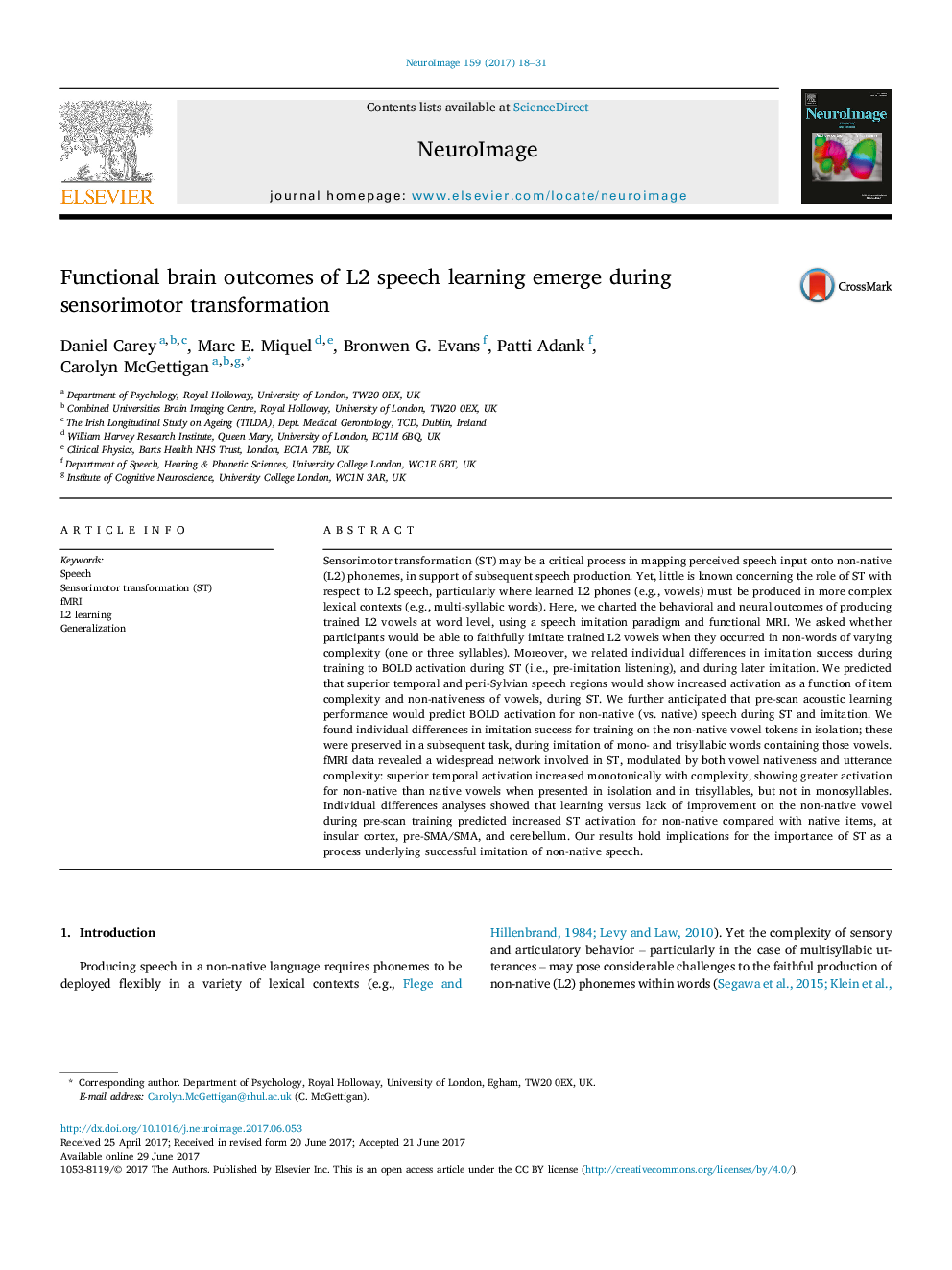| کد مقاله | کد نشریه | سال انتشار | مقاله انگلیسی | نسخه تمام متن |
|---|---|---|---|---|
| 5630834 | 1580851 | 2017 | 14 صفحه PDF | دانلود رایگان |

- We trained monolingual English speakers to imitate a non-native vowel (/y/).
- Participants then imitated the trained vowel within novel non-words.
- Substantial individual differences in imitation accuracy emerged.
- Performance at pre-scan training predicted activation increase or decrease during ST.
- Vowel nativeness and non-word complexity modulated superior temporal activity during ST.
Sensorimotor transformation (ST) may be a critical process in mapping perceived speech input onto non-native (L2) phonemes, in support of subsequent speech production. Yet, little is known concerning the role of ST with respect to L2 speech, particularly where learned L2 phones (e.g., vowels) must be produced in more complex lexical contexts (e.g., multi-syllabic words). Here, we charted the behavioral and neural outcomes of producing trained L2 vowels at word level, using a speech imitation paradigm and functional MRI. We asked whether participants would be able to faithfully imitate trained L2 vowels when they occurred in non-words of varying complexity (one or three syllables). Moreover, we related individual differences in imitation success during training to BOLD activation during ST (i.e., pre-imitation listening), and during later imitation. We predicted that superior temporal and peri-Sylvian speech regions would show increased activation as a function of item complexity and non-nativeness of vowels, during ST. We further anticipated that pre-scan acoustic learning performance would predict BOLD activation for non-native (vs. native) speech during ST and imitation. We found individual differences in imitation success for training on the non-native vowel tokens in isolation; these were preserved in a subsequent task, during imitation of mono- and trisyllabic words containing those vowels. fMRI data revealed a widespread network involved in ST, modulated by both vowel nativeness and utterance complexity: superior temporal activation increased monotonically with complexity, showing greater activation for non-native than native vowels when presented in isolation and in trisyllables, but not in monosyllables. Individual differences analyses showed that learning versus lack of improvement on the non-native vowel during pre-scan training predicted increased ST activation for non-native compared with native items, at insular cortex, pre-SMA/SMA, and cerebellum. Our results hold implications for the importance of ST as a process underlying successful imitation of non-native speech.
Journal: NeuroImage - Volume 159, 1 October 2017, Pages 18-31